
3.16 Exploring Multiples Co-Teaching MIP
- Subject:
- Mathematics
- Special Education
- Material Type:
- Lesson Plan
- Provider:
- VDOE
- Author:
- VDOE
- Date Added:
- 10/07/2024

3.16 Exploring Multiples Co-Teaching MIP

Scratch Jr. or Blockly with the teacher.
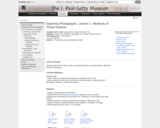
Students will learn the basic tools for analyzing images using description, reflection, and formal analysis.
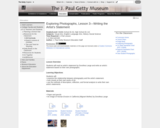
Students will read an artist's statement by Dorothea Lange and write an artist's statement based on their own photographs.

Students explore steady beat and instruments of the percussion family.

Students explore expressive qualities through various string techniques.

Students will construct a simple electromagnet using a dry cell, wire, nail, or other object containing iron (5.4 e), plan and conduct an investigation to determine the strength of an electromagnet (5.4 e), and define a problem and design a solution that uses an electromagnet; demonstrate and explain how the electromagnet works (5.4 e). After the completion of this module students will understand how to construct an electromagnet and explain how one works. This module was developed by Sarah Donnelly as part of a Virginia Commonwealth University STEM initiative sponsored by the Virginia Department of Education.

Students will be able to explore the different continents by correctly locating them through various materials! Using the medicine ball, puzzle globe, and 3d doodler pens, students will engage in an exciting activity that helps them understand the location of the different continents. Dive into the different continents and allow your students access to expand their knowledge using creativity!

Students listen to and describe sounds.

Exploring the interior angles of a triangle Mathematics Instructional Plans (MIPs) help teachers align instruction with the 2016 Mathematics Standards of Learning (SOL) by providing examples of how the knowledge, skills and processes found in the SOL and curriculum framework can be presented to students in the classroom.

In this unplugged lesson, students will learn about significant landmarks and geographic features in different regions of the world. They will use their knowledge of maps and globes to locate these landmarks and then remind students how computer scientists use decomposition to make large problems easier to solve by breaking them down into smaller subproblems. Students will apply their problem decomposition skills to break down a complex problem rEnglishted to planning a trip to visit some of these landmarks.

Exploring Exponential ModelsMathematics Instructional Plans (MIPs) help teachers align instruction with the 2016 Mathematics Standards of Learning (SOL) by providing examples of how the knowledge, skills and processes found in the SOL and curriculum framework can be presented to students in the classroom.

Performing operations with radical expressions containing rational exponents Mathematics Instructional Plans (MIPs) help teachers align instruction with the 2016 Mathematics Standards of Learning (SOL) by providing examples of how the knowledge, skills and processes found in the SOL and curriculum framework can be presented to students in the classroom.

English Instructional Plan – Expository Writing for Grades 4 and 5

English Instructional Plan – Expository Writing: Grades 2-3

Students will learn how to construct programs to accomplish tasks as a means of creative
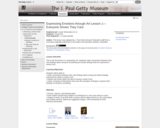
This is the first lesson in a sequential unit. Students make connections between their own feelings about caring for something and similar feelings that are expressed in works of art
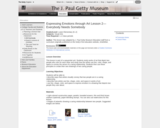
This lesson is part of a sequential unit. Students study works of art that depict two people who care for each other and study how the artists use line, color, shape, and space to convey the sense of a caring relationship. Students then use these principles to create their own drawings of two caring people
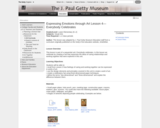
This lesson is part of a sequential unit. In this lesson we celebrate by creating a hat that expresses the ideas of caring relationships and working together that were explored in this unit.

The office just called your teacher and informed your class that the gym has been infected with BUGS! Yuck! Students are given the task of helping the exterminator “debug” the gym so classes can resume as normal. Students will trace a set of order of operations problems that are solved incorrectly and identify the bugs in the solution. Once a bug has been detected, students must make the necessary changes to debug the problem to get the correct solution.